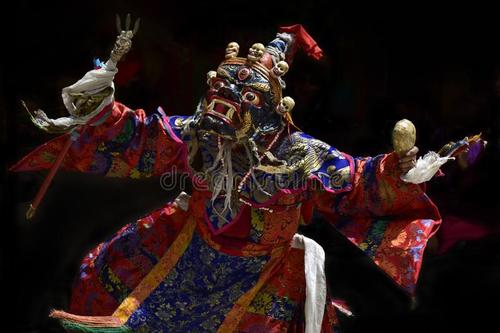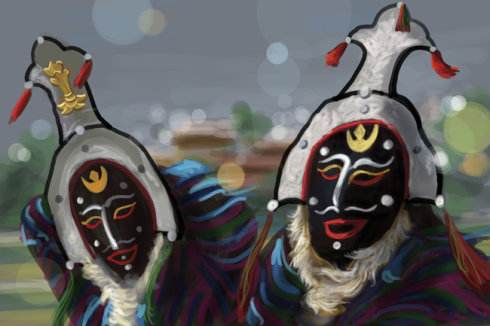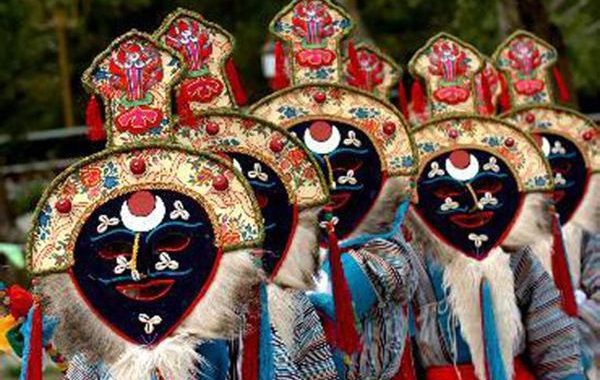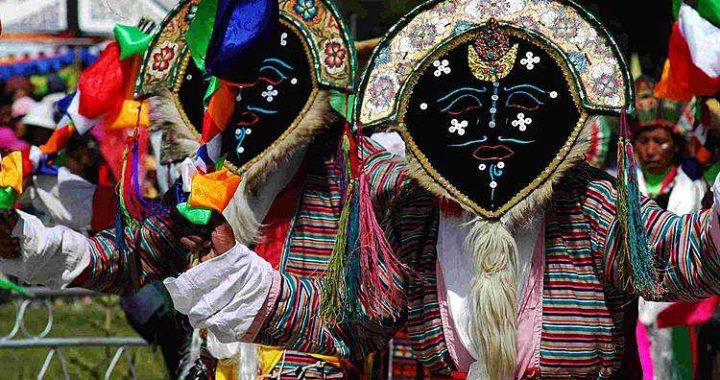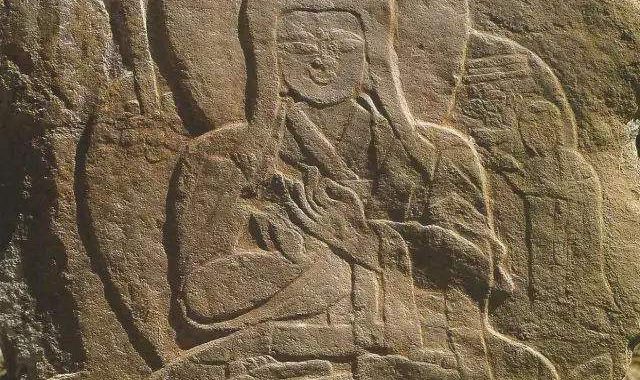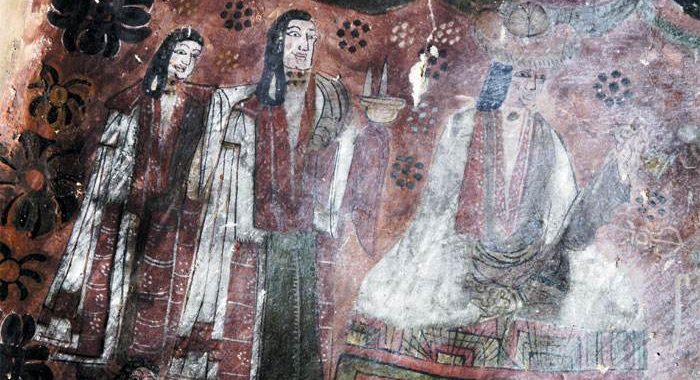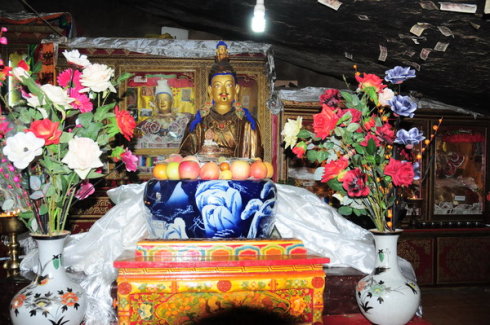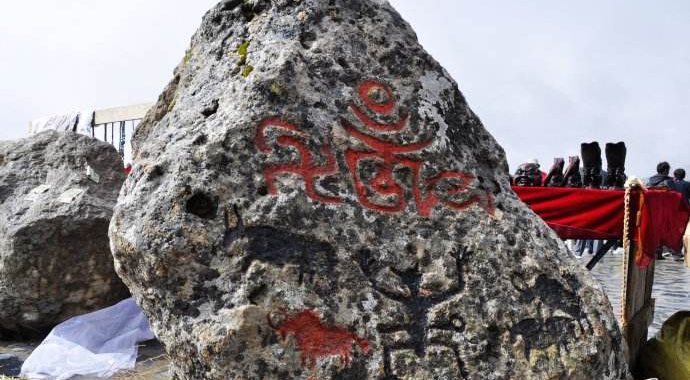CLIFF CARVINGS
3 min readAt the start of the period when Tibetan Buddhism culture prevailed, cliff carving became an important art form of Tibetan Buddhism. Cliff carving first appeared in the early period of the dissemination of Tibetan Buddhism. In the past twenty years,a great number of Buddhist stone carving relics that can be traced back to the Tubo Kingdom have been discovered in various areas of Tibet, especially in the eastern part. Cliff carvings about Buddhism form beautiful scenery demonstrating the religious culture in Tibet.
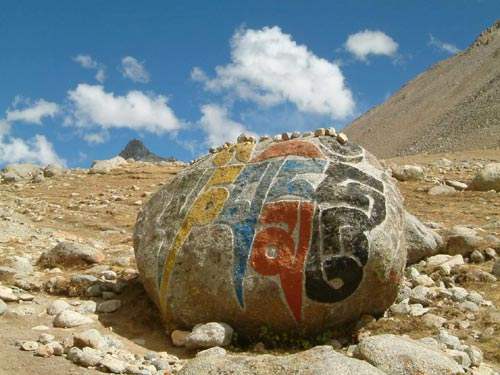
The cliff carvings of Tibetan Buddhism include grotto art and openair cliff carvings. The Palhalupuk Grottos at the foot of the Yaowang Mountain of Lhasa have high reliefs, and the grottos are of Indian style, with tower columns at the center. The statues in the grottos have been added many times. In the Ming Dynasty, there were 71 statues, including two clay statues, while the rest were high reliefs. They were statues of Buddha, Bodhisattva, Dharma protectors, disciples and historical figures such as Songtsen Gampo, Princess Wencheng, Princess Tritsun and GarTongtsen Yulsung. Significant works can be traced back to the Tubo period, and 47 of them are of ancient South Asia style. There is a collection of grotto art at the original Zongshan Site in Lhaze County, Shigatse Prefecture, including high reliefs of Maha-Vairocana, Amoghasiddhi, Aksobhya, Ratnaketu and Amitabha, featuring South Asianstyle, with bare limbs or body. They were made from the 10th to 12th century.
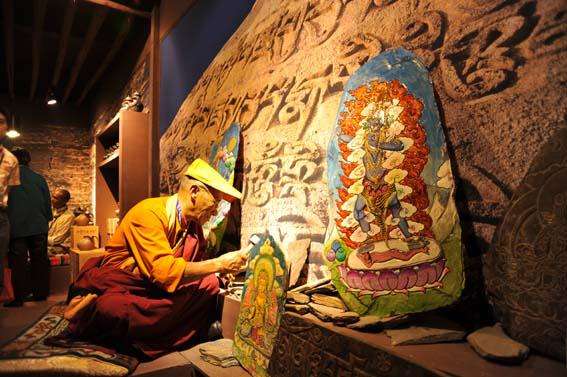
The twin end of the southern foot of the Yaowang Mountain of Lhasa has large areas of open-air cliff carvings. They are masterworks of god and Buddha statues made by various sects of Tibetan Buddhism. They were severely weathered by water flow and severely corroded, too. Thebelievers continuously fixed them to accumulate their own merit and virtues. The works show overlapping effect due to the carvings in different periods. They were painted or splashed with color, with vivid folk art style and features. In addition, there are many prayer flags swinging amid incense smoke. These areas become holy lands for worship of believers during the worship ceremony.
Along the side of the road leading to the airport in the western suburbs of Lhasa, there is a well-known grand Bodhisattva statue, facing the water in the east with a mountain to the back. It is visited bynumerous believers who worship it with great respect. Unlike solemn monasteries, it is closer to the people. The color and paint cannot cover its primitive features and it can be traced back to about the 15th century.
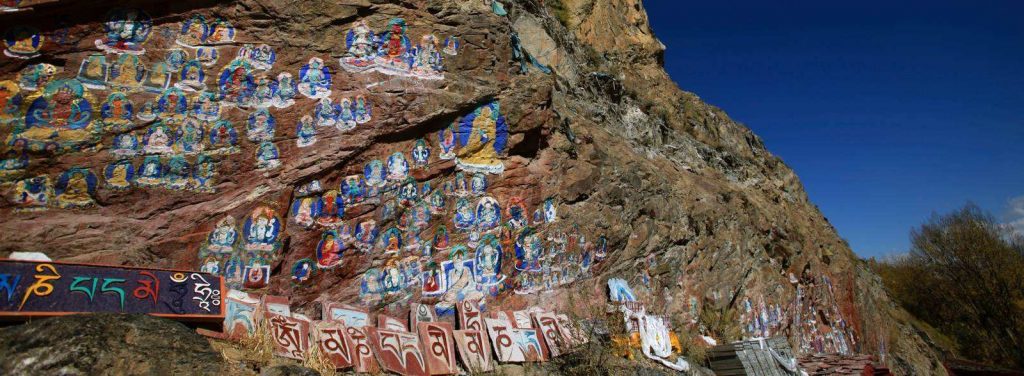
There were many huge stones around the monasteries in Lhasa. Many believers carved statues on these stones. Gradually, stone carvings appeared by the sides of the roads that were used by believers for their worship ceremonies. Therefore, the areas with these stones became large worship sites with a primitive and unsophisticated atmosphere. The most impressive works would be the huge stone statue of Tsongkhapa at Drepung Monastery, the cliff statue of Yamantaka at Sera Monastery andcliff statues at the Tara Cliff. Tibetan folk stone carvings were made according to local conditions and in a simple and unadorned way. That is a typical characteristic of these carvings.
